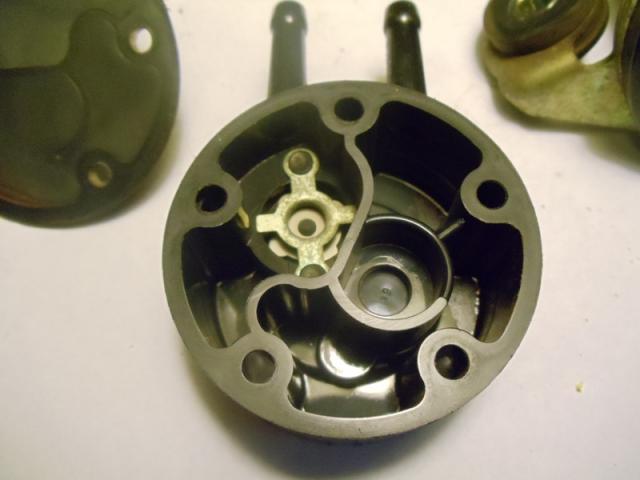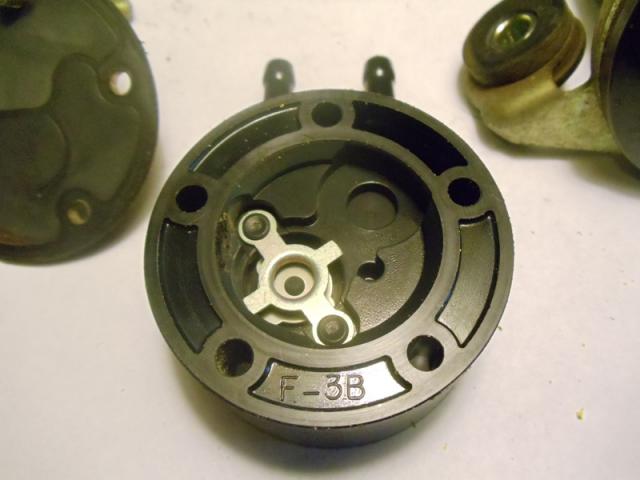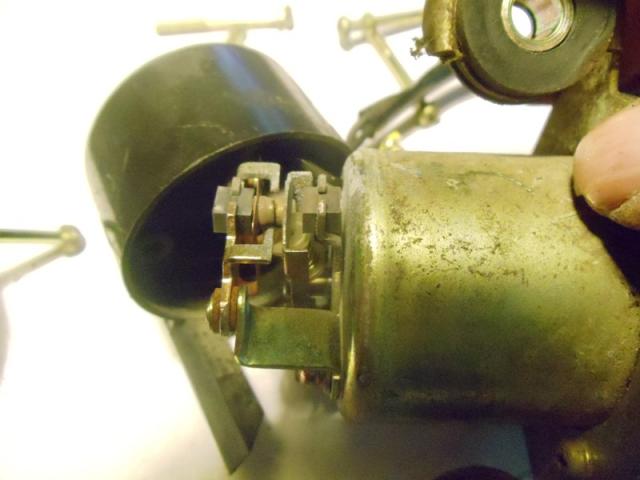Search the Community
Showing results for tags 'fuel pump'.
-
I bought this 1986 Venture Royale with the 1300 cc motor that wouldn't start. The previous owner is an auto mechanic and he replaced the fuel line from the petcock to the fuel filter because it was corroded but he didn't replace the fuel filter. I thought at first it was the fuel pump as the on my 83 Venture clicked a few times indicating that it was priming the fuel line to the carbs so I switched the two and the 86 worked as it should on the 83. I checked the relay as well and it was working good. I took off the line that runs from the fuel pump to the carbs, turned the key and it pushed the fuel through priming the system and made the clicking sounds. Before that i left the line on the carbs turned the key and no clicking that would indicate the line is primed. The only way the bike will fire up is with adding fuel to each of the carb tops. I have inspected the lines that deliver the fuel to each of the four carbs and they are clear of debris. I'm about to pull the fuel line to the carbs and see if the fuel is being pumped from the fuel pump when cranking the engine over. If anyone has an idea as I've checked all electrical as well and it's come to the fuel to the carbs...
- 11 replies
-
- 1300
- carberator
-
(and 2 more)
Tagged with:
-
with just over 200,000 kms on the 2006 RSV, the bike fails to start. Though it will crank and crank and crank, it won't catch. At first I thought it's the fuel pump (2nd one) I then notice the fuel gauge flashing 8 times, pause three secs, flashes 8 more time etc. According to the book, this indicates that the thermistor or sending unit is faulty. This bike hasn't shown proper fuel levels in a while now, usually drops to below half after 20 miles but holds sorta kinda normal down towards the last 3 bars.. (added) I now notice that the far right fuel bar flashes continuously after trying to start the bike.. the bike shows the far left bar as indicating a bad sender.. is the book bass ackwards? How does a bad fuel gauge sending unit affect if the engine should start or not? What's the normal course of action for repairs for this? Pull out the fuel sending unit and have a look at it to see if anything is obvious and if not, replace it? This had happened once before, thinking it was flooded but managed to start the bike after waiting 30 minutes.. did not notice any flashing fuel gauge that time.. (it might have been flashing but not seen). Thanks in advance for any advice. Cheers
-
Working on the hybrid this weekend I discovered that a 1st gen fuel pump is able to be mounted in place of the stock 2nd gen pump. Mine was bad, which I knew upfront when I got parts from Wrenchrob. The bracket from a 2nd gen will fit on a 1st gen pump just about perfectly. I had to cut old bracket off the 1st gen pump due to way it was installed, but that was very easy. The inlet & outlet hose barbs are a different orientation, but nothing serious. The plug connector fits the RSV harness. 1st gens haven't seem to have much problems with the fuel pump like the 2nd's have, so it is one more alternative. Some pictures attached. The 2 pictures of pumps on bench are both 1st gen pumps. One on right has the 2nd gen bracket mounted. Front & back view. Gary
-
ok, so i got a 42s fuel pump. it comes with a screw-in filter. should i leave this filter on as well as the inline filter i already have?? or should i just go to ACE and get a fitting, and leave my stock filter? thanks.
-
I was going to post this in reply to a members fuel problems, but decided to start a new thread so it could be located later for reference. Here is a bunch of pictures I took of a 1st gen fuel pump a week ago just for S&G's. The RSV is probably similar, but I don't know. Just offering this as maybe some help in understanding the mysterious fuel pump. It is not a really technical description below, but the basic operation. In a nutshell, the pump operates by energizing a coil and pulling the plunger towards the contact end. This pushes in the contact assembly on the other end, breaking the current path to the coil. The plunger returns to rest position, contact closes & cycle repeats. When the plunger pulls towards the contact, it pulls gas in from the tank into the pump cavity via a one way valve. On the Return stroke the fuel is pushed out another valve towards the carbs. This happens until 1 of 2 things occur, first is pump builds up pressure in line and and the plunger does not return forward to complete pump stroke. 2nd is the fuel pump circuit times out after 4 seconds of not sensing motor running and cuts off current to pump. On pump end there are two diaphragm type valves, one allows fuel to be pulled in to pump cavity, but not pushed back out. Other allows fuel to be pushed out towards carbs, but not flow back into carbs. Not my best tech write up. Gary

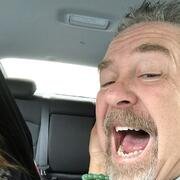
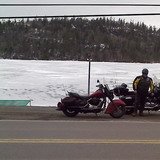

.thumb.jpg.9dfefb49018580a1813c8128f131546e.jpg)
